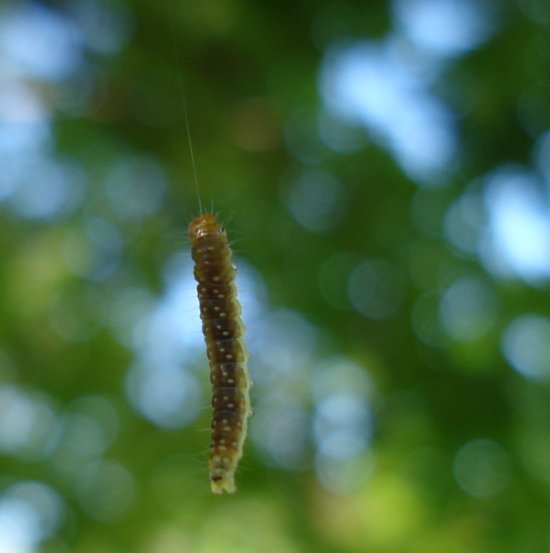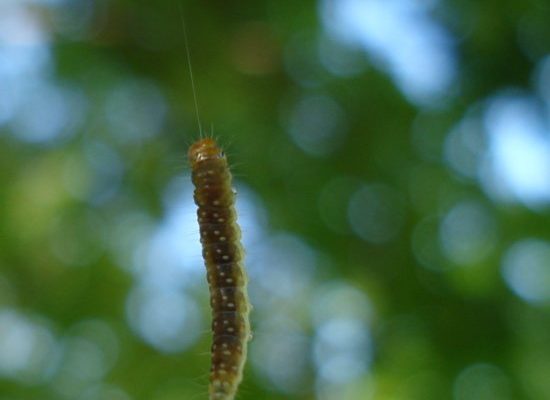
Inchworms, also known as measuring worms, are just one of the many fascinating creatures in nature. They produce silk for various reasons, whether it’s to protect themselves from predators or to create a safe route as they explore their environment. Let’s dive into the world of inchworm silk, exploring how these threads help them find their way and why they matter in the grand scheme of things.
What Is Inchworm Silk?
To get started, let’s talk about what inchworm silk actually is. This silk is produced from glands in the inchworm’s body. When an inchworm feels the need to move or secure itself, it releases the silk in long, thin strands. Imagine a spider weaving a web, but instead, it’s inchworms creating their own little highways in the trees.
This silk is primarily made of proteins, which allows it to be lightweight yet strong. It’s incredibly flexible too, meaning it can stretch as the inchworm moves. This versatility makes inchworm silk not only useful for securing their journey but also for potential defense against hungry predators.
You might be wondering how exactly these inchworms use their silk. It’s fascinating to think about! They’ll often lay down a thread just before they start inching along, creating a path that they can follow back if needed. This silk trail acts almost like a GPS for them, guiding their way through an often treacherous environment full of dangers.
The Purpose of Inchworm Silk Trails
So, why do inchworms bother spinning these silk trails? There are several reasons, and they all come down to survival. First off, the silk trails serve as anchors. When inchworms find a good spot to munch on leaves, they often secure themselves with their silk. This keeps them safe in high places where a gust of wind could easily send them tumbling.
Another critical purpose of these silk trails is navigation. As we mentioned earlier, they act like a roadmap. When inchworms want to return to a specific spot, they can follow their own silk trail back home. This is especially useful in dense foliage, where everything might look the same to a tiny creature.
Finally, these silk strands can help inchworms create cocoons when it’s time to evolve into their next stage as a moth or butterfly. By wrapping themselves in silk, they can protect themselves while they undergo this significant transformation. It’s like a protective blanket that shields them during a vulnerable period in their lives.
How Inchworms Use Silk for Protection
You might think that inchworms are easy prey, and you’d be right! They have many predators, like birds and larger insects. Here’s where their silky threads come into play. The silk serves as a protective barrier. If they feel threatened, inchworms will often drop down on a silk strand and dangle, making them less visible to hungry eyes.
This tactic is like an acrobat performing on a high wire. The silk allows them to escape quickly—almost like a superhero using a grappling hook. Plus, some silk trails can even confuse potential predators. It’s a smart strategy for staying out of harm’s way!
Interestingly, the silk can also be sticky, which makes it harder for predators to grasp them if they try to reach for the inchworm. So, not only does the silk provide a getaway route, but it also adds a layer of defense that can save an inchworm’s life.
The Role of Silk in Inchworm Habitats
Inchworm silk plays a vital role in their habitats. Many inchworms live in trees or shrubs, where they can munch on leaves and blend in with their surroundings. The silk trails help stabilize these tiny creatures as they navigate their vertical world.
Think of it like building a bridge. The silk threads create a continuous line that inchworms can follow from branch to branch without falling. This stability is crucial—especially when you consider that inchworms can sometimes be quite clumsy as they inch along.
Moreover, these silk trails can influence the surrounding ecosystem. When inchworms spin their silk, it can help some plants by providing a natural fertilizer as the silk decomposes. It’s a cycle of life that enriches their environment while performing essential functions for the inchworm.
Inchworm Silk and Their Life Cycle
Let’s touch on how inchworm silk ties into their life cycle. Inchworms undergo a metamorphosis, turning into moths or butterflies. When the time is right, they produce silk to create a cozy cocoon. This is a crucial transition that signifies a change to their adult form.
This process is kind of like a caterpillar turning into a beautiful butterfly. The silk not only protects them during this change but also provides them with a safe space to develop. During this time, they’re vulnerable, so having that extra layer of protection can be life-saving.
Once they transform into adult moths or butterflies, they’ll emerge from their silk cocoons, ready to take flight and start the cycle over again. It’s a beautiful story of growth that silk plays a significant role in.
Inchworm silk trails might look like delicate threads at first glance, but they are so much more than that. They are crucial for navigation, protection, and survival in the world of inchworms. Just imagine how these tiny creatures masterfully use these silk strands to explore, avoid predators, and eventually undergo their incredible transformations.
Understanding the purpose of inchworm silk trails helps us appreciate the complexities of nature. These tiny threads connect to a larger ecosystem, showcasing the beauty and intricacy of life. The next time you spot an inchworm trail, take a moment to think about the stories they tell—a tiny creature’s journey full of challenges, victories, and transformations.

